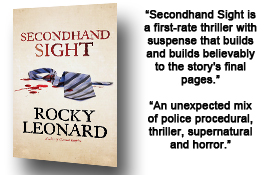 If queried for their opinion about the authenticity of the Shroud of Turin, probably 9 out of every 10 people would essentially say the same thing — carbon testing performed in 1988 clearly proved that the religious artifact was nothing more than a brilliantly conceived fraud. I can’t say that I find fault with the Shroud’s critics, because I’ve seen the same evidence.
If queried for their opinion about the authenticity of the Shroud of Turin, probably 9 out of every 10 people would essentially say the same thing — carbon testing performed in 1988 clearly proved that the religious artifact was nothing more than a brilliantly conceived fraud. I can’t say that I find fault with the Shroud’s critics, because I’ve seen the same evidence.
After all, test results obtained by careful application of the scientific method are really tough to dispute. And the 1988 tests seemed to prove beyond any reasonable doubt that the Shroud was a forgery.
Even as stubborn as I can be when it comes to accepting “facts” when other people have told them to me, I must concede that when multiple independent tests have reached the same conclusion, it is almost always because they invariably have gotten the correct answers.
It should be noted that the key word in the sentence above is “almost.”
As part of the Shroud of Turin Research Project (STURP) three different laboratories in Zurich, Oxford, and Tucson performed independent carbon dating tests. They all concluded the alleged fake shroud was supposedly manufactured sometime between 1290 and 1360 AD, ostensibly for no other reason than to fool a lot of people and legitimize belief in the crucifixion and resurrection of Jesus.
Interestingly, the STURP experiments produced a puzzling mix of results. Tests and analysis eliminated any possibility the image on the fabric had been painted. One test indicated that a copious amount of human blood had saturated the fabric after oozing from the gruesome wounds on the head and torso of the body that the shroud had covered.
The summary of conclusions reached by the STURP team included this statement:
We can conclude for now that the Shroud image is that of a real human form of a scourged, crucified man. It is not the product of an artist. The blood stains are composed of hemoglobin and also give a positive test for serum albumin. The image is an ongoing mystery and until further chemical studies are made, perhaps by this group of scientists, or perhaps by some scientists in the future, the problem remains unsolved.
The carbon dating test results present problems for religious people who wanted to believe the scourged and crucified man had been Jesus. The Shroud of Turin simply couldn’t be authentic unless multiple independent tests somehow produced erroneous results.
But then a pair of amateur detectives/scientists named Joe Marino and Sue Bedford published a peer-reviewed research paper suggesting that the carbon dating test results for the Shroud of Turin were incorrect — not because the tests were flawed, but because the sample itself was flawed.
Bedford and Marino claimed that the sample that was carbon-dated came from a section of the shroud that had been expertly repaired to be undetectable by the naked eye.

Ray Rogers, one of the lead research scientists involved with STURP, became furious when he found out the integrity of his work product had been challenged by amateurs in a published, peer-reviewed paper. He said the claims of Benford and Marino were absurd and promised to prove they were wrong by testing material from the original sample still in his possession.
Instead, Rogers found powerful evidence suggesting Benford and Marino had been absolutely correct in saying the material for the original carbon dating tests had been taken from a contaminated section of the shroud, identifying cotton fibers in the sample not found in the rest of the shroud.
He proposed testing the scorch marks on the shroud for more accurate carbon dating. The new tests have recently been performed, putting the shroud in the right time frame so that it can you buy prednisone over the counter in mexico could be authentic. Shortly before dying of cancer, Ray Rogers published a paper refuting the earlier carbon dating results from the tests performed in 1988, on the basis the sample was flawed.
Rogers also claimed in an interview that he’d come close to proving the shroud was real. But had he?
Here’s what we think we currently know:
The Shroud of Turin once covered the bloodied corpse of a crucified man. The image on the shroud was created by a still unidentified process. It was not painted. From pollen and flower tests, we also know the shroud was once in or very near to Jerusalem. And now we even know that the shroud order stromectol mastercard could have been in Jerusalem in 33 AD.
Here’s what we should acknowledge that cannot ever be proved:
The shroud temporarily covered the mortal remains of Jesus the Christ while He was in the tomb prior to His resurrection. We can allow that based on this new evidence, we can assert that we believe the shroud is authentic, but we cannot claim to know it’s real.
That would be claiming to have knowledge of evidence that eliminates any need for faith.
[Correction: reader Dan Porter from the website shroudstory.com called to my attention that the original article incorrectly cited a 2005 paper published by Benford and Marino. The link has been corrected to point to the 2000 paper in this edited version.]

John, the paper linked to by you in this posting, the paper you say made Rogers furious, refers to the late Ray Rogers. See my posting at shroud at shroudstory.com.